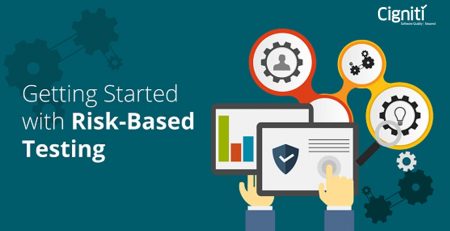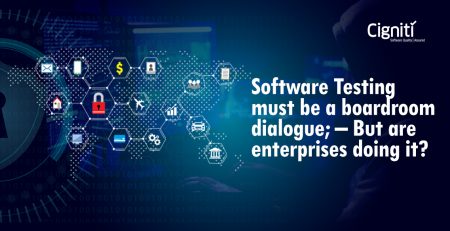Why Do Property and Casualty and Healthcare Insurance Sectors Need Testing?
As per the Global Insurance Outlook by Ernst & Young for 2015, “Many insurers are investing in digital platforms that strengthen their relationships with customers across all product classifications and geographies. Their goal is to empower both businesses and consumers to better shop for insurance, making products more transparent, easier-to-understand and compare.”
Software works hand in glove with insurance processes and is designed so as to meet the customer’s need. Thus, it remains crucial that the software’s durability and consistency is tested before its actual deployment. However, a lot of times, large enterprises like banks and insurance are usually organized by product development groups which results in every team approaching test automation in their own way using different set of tools, which creates an atmosphere of inconsistency.
In today’s DevOps world, software development teams need to seamlessly, and continuously test, deploy, and monitor code to improve the quality of the code. This leads to the development of applications with a better front-end, helps check and monitor any defects early on in the development process, thus generating new business. Introduction of testing early on in the SDLC also helps improve the abilities to analyse what went wrong, gives a complete picture of the architecture as a whole, improves collaboration, and provides a robust code. An agile testing platform will not only improve the software development process, it will also provide a strong support to the QA teams, and by reducing the time for go-to-market, will also help improve ROI.
Let us take a brief look at the need of testing in two sectors of Insurance – P&C and Healthcare, and why is testing IoT crucial for the Insurance sector.
The Need of Testing in the Property and Casualty Insurance Sector
In a recent interview, Ben Riches, head of application design and delivery at Aviva UK’s GI division, said “The QA function has traditionally been a testing function at the end of the lifecycle. Putting quality much earlier in the process reduces costs. We are actively driving a focus on quality throughout the software development lifecycle, and development testing represents a key enabler in our ability to uplift the quality of our IT solutions and online services, and ultimately our customer satisfaction and brand,” said Riches.
Such a stance by Aviva, one of Canada’s leading providers of property and casualty (P&C) insurance, goes on to indicate the urgency – and the understanding of the business-critical need of testing in the insurance sector – by the insurance sector across the globe.
As per an article published on Deloitte’s 2015 P&C Insurance Industry Outlook, “property and casualty (P&C) insurers need to deal with more systemic challenges to lead the industry”. To achieve this, insurers need to optimize their huge data repositories from both the traditional forms of data collection to using inputs from the auto telematics and the Internet of Things. They need to provide for a comprehensive testing of their data management systems and the robustness of their architecture. In addition, they need to perform thorough security testing for the management of the new information so collected. These insurers must also test the completeness and accuracy of the information shared with the public and perform compliance testing to meet the needs of the standards set by “multiple overseers—state, federal, and international”.
The article goes on to add that the “P&C insurers will need better frameworks and models to meet the increasing demands of stakeholders for more robust stress testing…”.
The need of Testing in the Healthcare Insurance sector
In case of Healthcare insurance firms that have a presence across nations, there’s a need to ensure that their applications are always in compliance with state and federal laws like HIPAA that make it mandatory for all stakeholders to guard and protect patient information. The increasing risk of data breaches by employees has made it difficult to access production data for the purpose of building test data. With the frequent modifications made to the regulations, it becomes imperative for making adequate changes to the applications – and then testing the same end-to-end for any non-compliance or loss of quality or feature. For example, HealthCare.gov, a federal government health insurance portal, crashed often due to the heavy traffic. Needless to say, this was a result of the website not being adequately tested for performance and load bearing capacity. In another instance, when the Massachusetts Health Exchange revamped its website to meet the demands of the federal Affordable Care Act, it did not test the site properly in terms of information due to which people were forced to file paper applications for insurance plans.
The Need of IoT Testing in the Insurance sector
As per studies conducted by Cisco, Insurance is one of the 4 Industries which will gain the most from the fourth industrial revolution – better known as Internet of Things (IoT). This definitely adds a lot more pressure for performing end-to-end Testing of all products that come under the purview of the Insurance sector.
IoT is swiftly transforming electronic products and its importance cannot be overlooked as it is making today’s users well informed and up to date. In order to implement IoT, organizations need to work closely with mature vendors to thoroughly test the IoT products before launch to overcome hurdles such as error detection and failure of IoT products later on. In the Insurance sector, testing for Privacy and security is critical as most of the devices have minimal human interference, which considerably increases the risk of security breaches or cause devices to malfunction that may cause severe failures in the IoT ecosystem. To guard the systems from major damage from attacks and to avoid security breaches Continuous testing is a must. Additionally, because there’s a huge amount of data involved in the Insurance sector, enterprises need to be able to keep testing and analyzing the complex data generated by IoT sensors every millisecond.
Quality also plays a key role in helping the IoT market succeed. Testing IoT in the areas of security, data management, and privacy concerns helps in the creation of trusted products.
Conclusion
The Insurance sector involves a huge volume of data. Continuous testing in the Insurance sector accelerates continuous integration and delivery. Continuous feedback helps in testing earlier and provides a greater testing coverage and removes the traditional testing hurdles.
Cigniti is the world’s second largest independent testing services organization. We provide end-to-end testing solutions for a range of industries including the insurance sector. Our experienced testers bring you the advantage of in-depth technical expertise and unmatched domain knowledge. We are proud to say we have been cited by leading research firms like Gartner, Forrester and Nelson Hall for our commitment to quality.





Leave a Reply